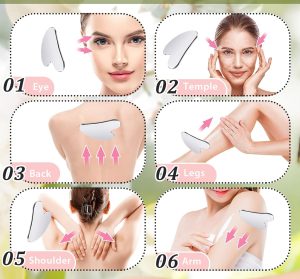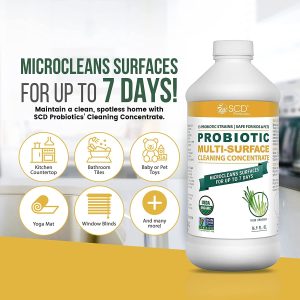
Your Pre-Detox Process for Health and Glowing Skin
Target Audience:
This guide is helpful for those recovering from mold exposure, dealing with chronic illnesses, or simply looking to optimize their health and skin appearance.
Introduction
Ever feel like your body needs a little extra help to bounce back? Before you dive into a full detox, prepping your body can make a world of difference. Think of this as your roadmap to better health—hydration, movement, and simple daily practices can transform how you feel from the inside out. Let’s jump in and explore how you can give your lymphatic system a boost!
Step 1: Sleep and Hydration
- Good Sleep: Quality sleep is your body’s natural reset button, allowing your lymphatic system to work efficiently. Rest is critical for detox!
- Hydration: Ever noticed how great you feel after a tall glass of water? That’s because hydration supports lymphatic flow and helps flush toxins from your system. Sip on water throughout the day and add hydrating foods like cucumber and watermelon for an extra boost.
Step 2: Niacin Supplementation
- Niacin’s (vitamin B3) Magic: Niacin can cause capillary dilation which increase circulation in your skin, to loosen up this critical detox pathways, making it a simple yet effective tool for jump starting your lymphatic movement. It primes your body for sweating—perfect for stimulating lymphatic flow. However it’s easy to take to much too soon, start slow/low dose, contact your personal healthcare provider for appropriate dosage.
Step 3: Body Movement
- Get Moving: Gentle movement is your lymphatic system’s best friend. Try bouncing, twisting, hanging, even getting upside down (yes, really!) to encourage circulation. The goal is simple: get that lymphatic fluid moving to support your body’s detox processes.
Step 4: Dry Brushing in a Closed Shower
- Brushing for Detox: Grab a natural bristle brush and dry brush your skin in a closed shower (this helps contain any skin flakes, and actinomycetes exposure and spread). Start from your feet and work your way up, brushing toward your heart and down neck, shoulders, back, and front. This practice stimulates lymphatic flow and leaves your skin feeling refreshed.
- Why It Works: Dry brushing helps exfoliate the skin, enhances circulation, and reduces toxins—especially important for those dealing with environmental stressors like mold exposure and sensitivities to human habitat bacteria.
Step 5: Hot-Cold Contrast (Sauna & Cold Tub or Shower)
- Advanced Option (Sauna & Cold Plunge): If you’re ready to level up, try alternating between 5-10 minutes in a sauna and 30 seconds in a cold tub. Don’t forget to focus on deep breathing to manage the cold shock—this is where resilience builds!
- Beginner Option (Shower): Not ready for the plunge? No problem! Start with a warm shower for 1-2 minutes, then switch to cold water for 30 seconds. Breathe through the discomfort and feel your body come alive! Repeat the cycle 1-3 times, always ending with cold water.
Step 6: Lathering and Body Scrub
- Quick Exfoliation: Lather up with your favorite body wash, and use a scrub pad to exfoliate your skin. Follow the same pattern as dry brushing—work toward your heart, focusing on lymphatic drainage. This gives your skin a deep clean and gets you prepped for the next step.
Step 7: Contrast Shower
- Repeat the Hot-Cold Magic: After scrubbing, give your body another contrast shower. Start with warm water, then switch to cold for 30 seconds. This step further stimulates circulation and keeps your body resilient.
Step 8: Oil Application and Gua Sha
- Nourish and Restore: Apply a natural oil like jojoba or coconut to your damp skin. Use a Gua Sha tool to gently scrape along the body’s lymphatic pathways, starting at the face and moving toward key lymph nodes. This step enhances circulation, reduces puffiness, and supports your body’s detox pathways.
- Pro Tip: Gua Sha is an ancient technique, trusted for centuries to promote detoxification and glowing skin.
Step 9: Nutrition for Lymphatic and Skin Health
- Collagen-Rich Foods: Boost your intake of bone broth, marine collagen, and Vitamin C-rich berries to support skin elasticity and repair.
- Antioxidants: Add a rainbow of fruits and veggies to your meals—think polyphenol-rich foods like colorful salads to fight inflammation and support detox.
- Hydration: Eat water-rich foods like cucumber and celery to stay hydrated and support lymphatic flow. Every bite counts when it comes to keeping your body hydrated!
Self-Assessment
How’s your lymphatic health? Ask yourself:
- Do you have trouble sweating?
- Do you experience strong body odor?
- Do you have inflammation or neuropathy?
- Are you recovering from mold exposure?
If you answered yes to any of these questions, your lymphatic system could likely use some extra love! Start incorporating these steps, and see how your body responds.
Final Thoughts: Take It Slow and Build Up
Don’t feel like you have to do everything at once. Start slow and listen to your body. Incorporate these practices into your daily routine gradually—whether it’s just the dry brushing or the contrast shower, your body will thank you. And as always, consult your healthcare provider if you need personalized advice.
Conclusion
This daily routine will transform how you feel and look. By taking small, consistent steps, you’ll experience better circulation, clearer skin, reduced inflammation, and a healthier, more resilient body. Remember, starting your day this way sets you up for success—every time you commit to these practices, you’re investing in your well-being.
Ready to feel the difference? Share your progress in the comments below, and let’s make this journey to lymphatic health a community effort!
Call to Action
Liked this guide? Bookmark it and share with someone who could use a little extra self-care. If you’re looking for personalized advice or have any questions, feel free to reach out for a consultation. Your journey to optimal health starts here!










